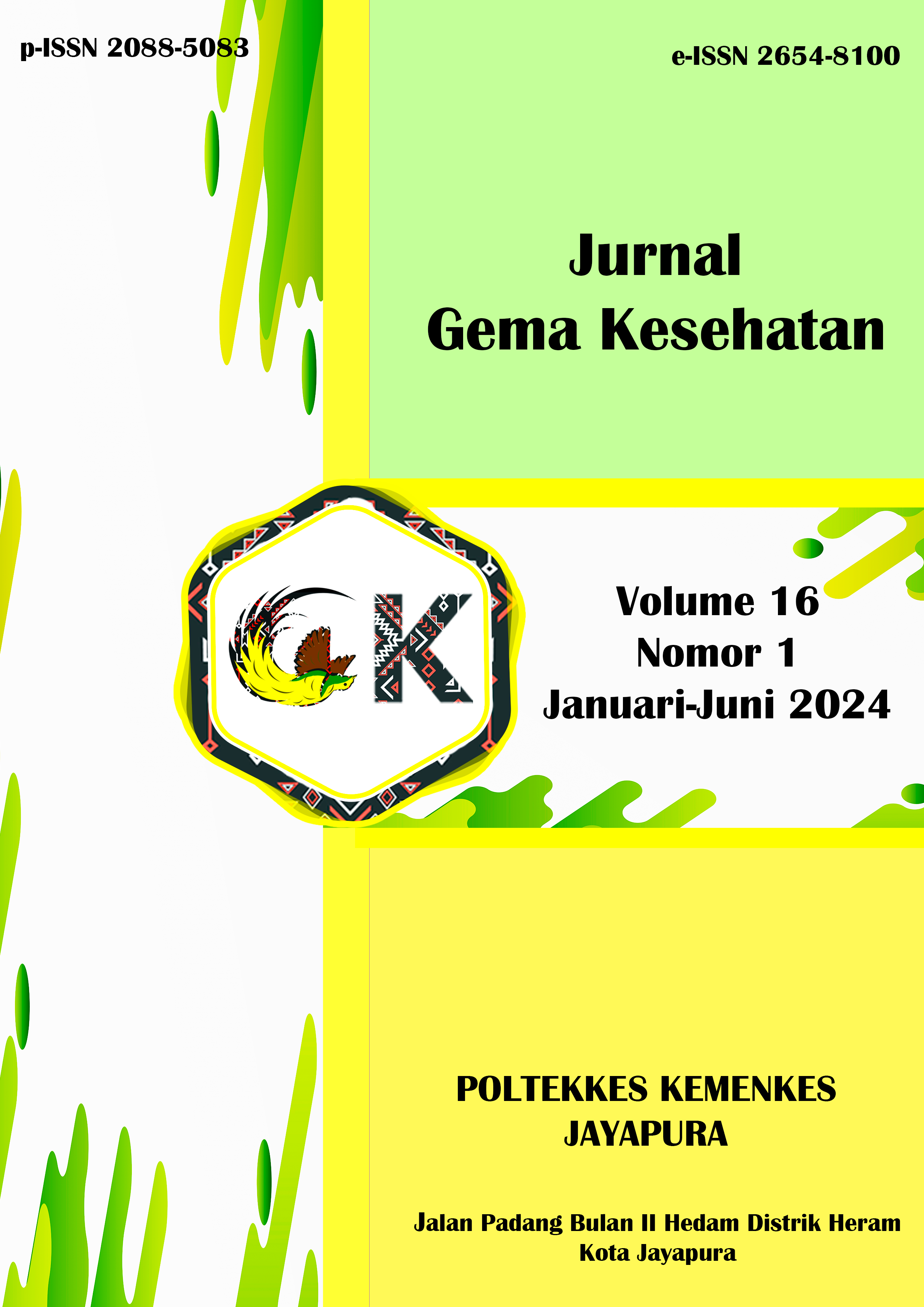POLA KONSUMSI MAKAN DAN KEJADIAN UNDERWEIGHT BALITA DI WILAYAH KERJA PUSKESMAS ANGGUT ATAS KOTA BENGKULU
FOOD CONSUMPTION PATTERNS AND INCIDENTS OF UNDERWEIGHT AMONGST CHILDREN UNDER FIVE YEARS IN THE WORKING AREA OF ANGGUT Atas COMMUNITY HEALTH CENTER, BENGKULU CITY
Abstract
Underweight masa balita dapat menurunkan kualitas hidup anak. Banyak faktor yang berkontribusi munculnya underweight, antara lain pola konsumsi harian yang berdampak memperlambat pertumbuhan dan perkembangan anak. Penelitian ini bertujuan mengetahui hubungan pola konsumsi dengan kejadian underweight pada balita usia 24-59 bulan di Wilayah Kerja Puskesmas Anggut Atas Kota Bengkulu. Jenis penelitian adalah observasional analitik dengan rancangan case control pada 60 sampel (10 kasus dan 50 kontrol). Pengumpulan data dilakukan melalui wawancara dengan ibu balita menggunakan formulir FFQ (Food Frequency Questionnaire) dan pengukuran berat badan balita. Pengambilan sampel kelompok kontrol menggunakan teknik accidental sampling. Hasil uji kai kuadrat memperlihatkan ada hubungan pola konsumsi makan dengan kejadian underweight pada balita usia 24-59 bulan (nilai p= 0.001). Kesimpulan, anak yang memiliki pola konsumsi makan kurang (skor ≤ 500) ditemukan pada seluruh balita namun kelompok kasus lebih tinggi dibanding kontrol. Guna mencapai pertumbuhan dan perkembangan balita secara optimal diawali dari ibu memperhatikan pola makan yang benar (3 kali sehari), jenis makanan yang beragam, dan porsi makan yang disediakan sehingga dapat mencegah underweight.
Kata kunci: Balita, Pola Konsumsi Makan, Underweight
Underweight in infancy can lower the quality of life of children both in the short and long term. Many factors contribute to the emergence of underweight, including daily consumption patterns that slow the growth and development of children. This study aims to determine the relationship between consumption patterns and underweight incidence in young people aged 24-59 months in the Puskesmas Anggut Working Region above Bengkulu City. The type of research is analytical observational with a case-control design on 60 samples (10 cases and 50 control). The data was collected using the FFQ (Food Frequency Questionnaire) form through interviews with babies and weight measurements of babies—sampling using accidental sampling techniques for control groups. The square test results showed a correlation between eating patterns and underweight incidence in young people aged 24-59 months (p-value = 0.001). Conclusions of children who had less eating patterns (if score ≤ 500) were found in the entire news, but the case group was higher than the control. The optimal growth and development of the baby starts with the mother paying attention to the proper diet (3 times a day), varied types of food, and served portions of meals to prevent underweight.
Keywords: Food Consumption Pattern, Toddler, Underweight
Downloads
Published
How to Cite
Issue
Section
Copyright (c) 2024 Apriliya Putri. RH, Betty Yosephin Simanjuntak, Ayu Pravita Sari

This work is licensed under a Creative Commons Attribution-ShareAlike 4.0 International License.
Copyright Notice Authors who publish with Gema Kesehatan (GK) agree to the following terms: Authors retain copyright and grant Gema Kesehatan (GK) right of first publication with the work simultaneously licensed under a Creative Commons Attribution License CC-BY-SA
Most read articles by the same author(s)
- Restiza Lindu Ananda, Betty Yosephin Simanjuntak, Yenni Okfrianti, PEMBERIAN KUKIS IKAN GAGUK (Arius thalassinus) MENINGKATKAN BERAT BADAN REMAJA PUTRI UNDERWEIGHT DI PESANTREN PANCASILA KOTA BENGKULU , GEMA KESEHATAN: Vol. 15 No. 2 (2023): Desember 2023



















